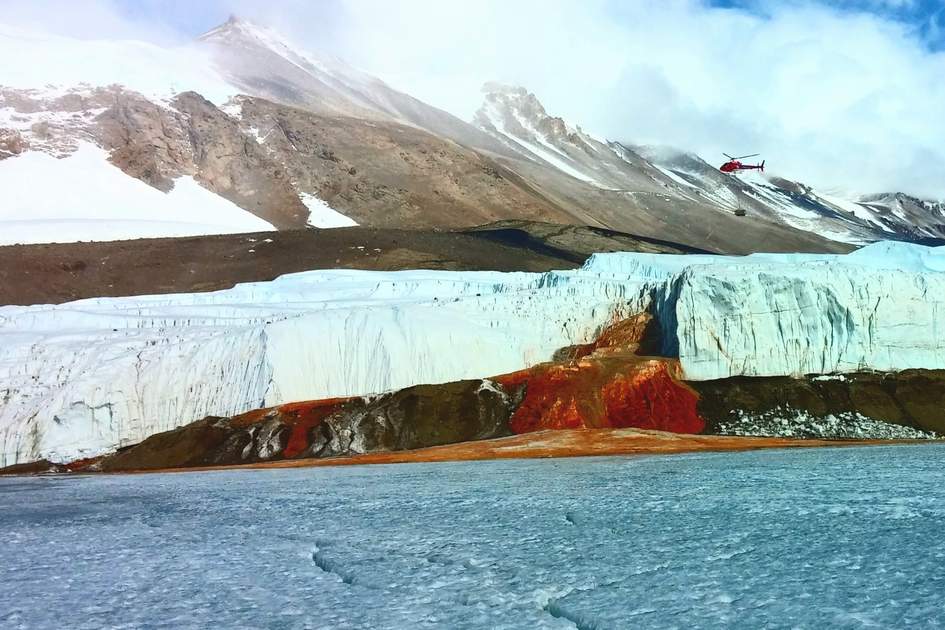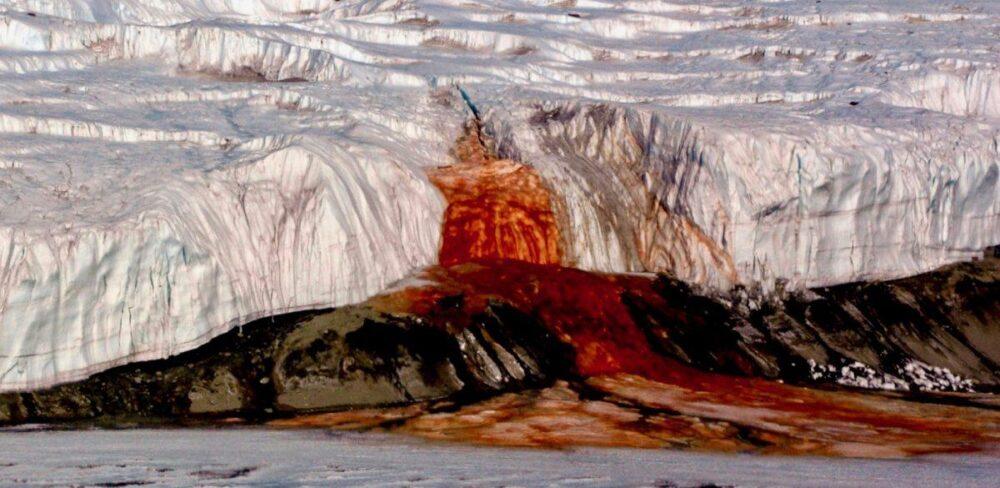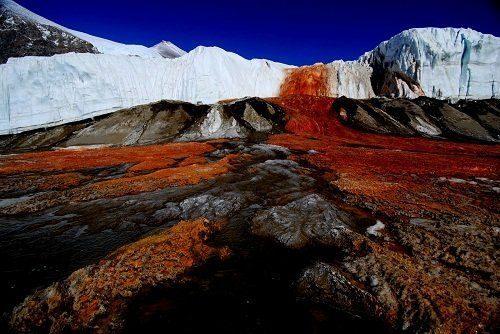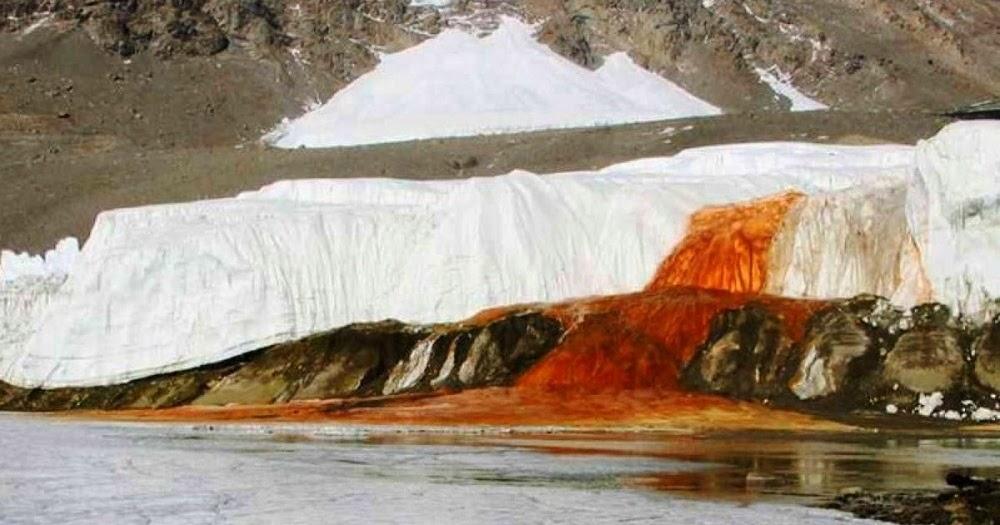Blood Falls is a waterfall in Antarctica red as blood.

Antarctica is in pain. Its glaciers are not only melting as a result of global warming. There’s also Blood Falls, which is a waterfall where red-colored water seeps out of glacial ice.
Initially, scientists thought the color came from red algae, but they later discovered that the water was extremely iron-rich. Blood Falls’ source water is actually colorless, but it turns red when the iron in it oxidizes when it comes into contact with air, similar to how things rust.

Some questions remain after the mystery of the red color has been solved. Where does the water come from? What is the source of the iron? Why isn’t the water frozen, despite the fact that the average temperature in the area is -17° Celsius (1.4° Fahrenheit)?

Blood Falls flows from the mouth of Taylor Glacier, but it is not made up of glacier melt water, as one might expect. The water comes instead from an ancient lake formed 5 million years ago by ocean water that flooded East Antarctica. Glaciers formed over the lake two million years ago, trapping it beneath.

When the water on the surface of the subglacial lake began to freeze, the salt concentration in the remaining water became higher and higher. Today, the water is three times as salty as the ocean, which means that it does not freeze despite temperatures dipping below 0° Celsius (32° Fahrenheit).

The iron in the water is thought to come from particles that enter the lake as a result of Taylor Glacier’s scraping motion – iron is common in Antarctic bedrock. Microbes that feed on iron and sulfur also live here. As they erode the iron-rich bedrock surrounding the lake, these are thought to add iron to the water.

Researchers discovered how water from the subglacial lake can be transported through the glacier in 2017. They discovered a network of subglacial rivers flowing through cracks in the glacier using radar scanning. The salty water from the source lake has a lower freezing point than the glacier and releases heat when it freezes, which is known as latent heat. When source water comes into contact with a glacier, it freezes, while latent heat melts the glacial ice, allowing rivers to flow.

Since some of the source water have frozen on the way through the glacier, the water that reaches the glacier’s mouth has an even higher concentration of salt and iron. The presence of salt also increases the rate of the reaction between iron and oxygen, making Blood Falls even redder.

Blood Falls flows into a frozen lake in Taylor Valley, one of the McMurdo Dry Valleys, a series of valleys in Antarctica that are ice-free despite the cold temperatures due to the area’s dry weather.






